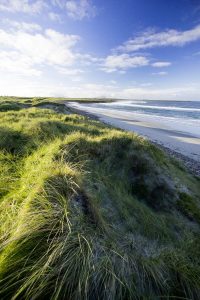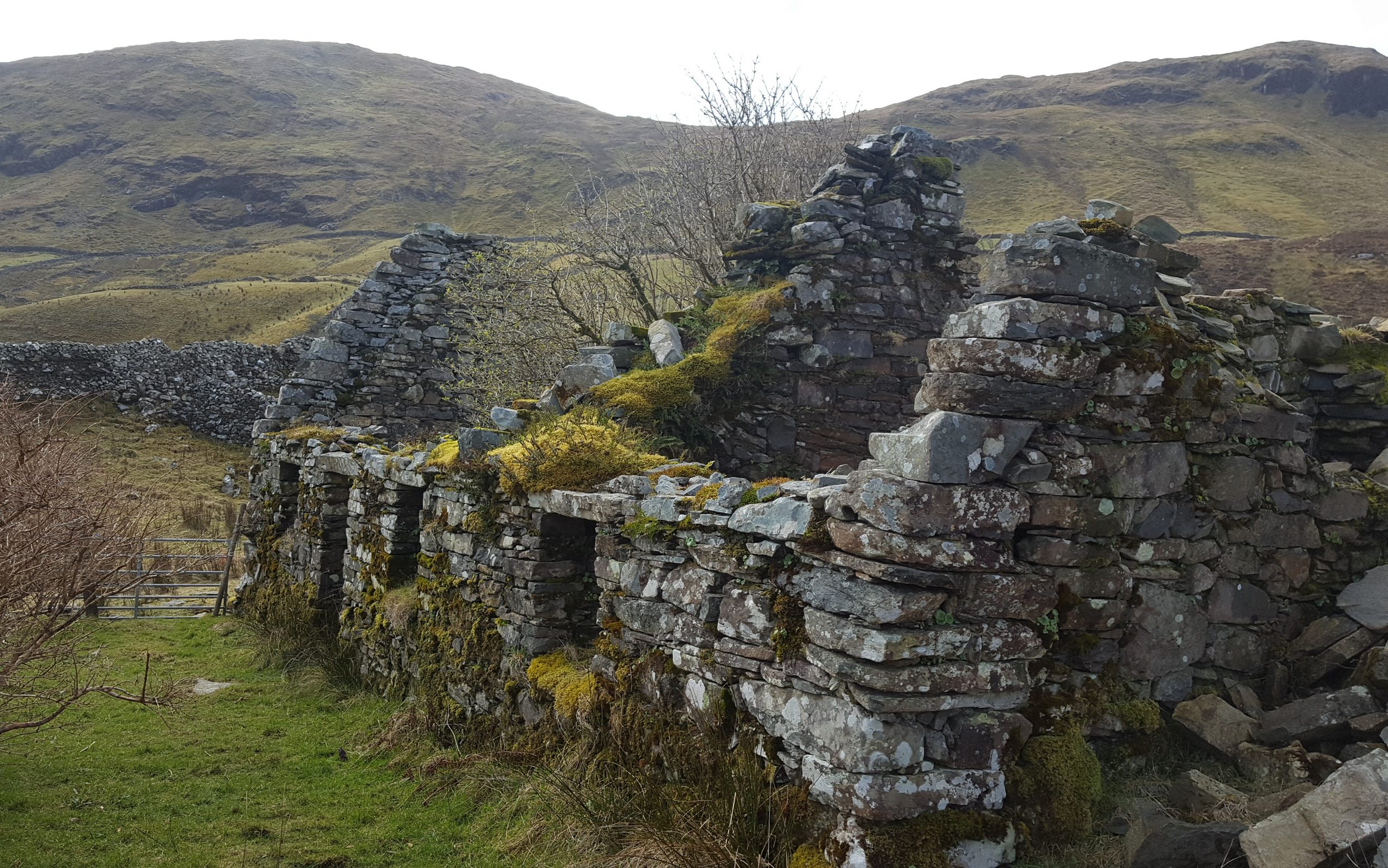by Hilary Kiely
Near Binghamstown on the Erris Peninsula of County Mayo (a town known locally in this Gaeltacht area as An Geata Mhór, or the big gate, after the toll gate erected by the English landlord across the main road in the 1820s), the shifting sands of the Cross Loop sometimes hide a secret. Folk memory holds that a pyramid-shaped cairn was raised to honour the dead of the Battle of Cross. The King of Munster is said to have sailed into Elly (Óiligh) Bay to challenge the King of Connacht, and when the tide is out at times what is believed to be the remains of that fleet have sometimes been seen. The locals drove their cattle into what became known as Dunnambo (Dún na mBó – the Fort of the Cows) to safeguard their treasured cattle from the invading force.
“The sandhills are a singularly weird and lonely tract, famous for strange apparitions such as St. Elmo’s fire, and reputedly the haunt of fairies and ghosts. They abound with small circles and cists, and in the centre a perfect and conspicuous little pyramid of slabs is called the Leacht air Iorruis, or tomb of the slaughter of Erris. It is hard to find out how far the legends existed while the monuments were hidden away under the unremembering sands.”

Almost as fascinating as the tale of the battle is the ephemeral nature of its monument. The Leacht air Iorruis (Tombs of Erris) has at times been just a memory, with folk able to point to where the monument “ought to be”, and at others, uncovered by the storm winds and swallowed again by the sands during the next. When a particularly strong storm hit in the early part of the 19th century, not alone was the cairn exposed but also the bones of countless other fallen of the Battle of Cross.
Another cairn sometimes recorded as Reemooni, faced this Leacht. Inside was found the skeleton standing upright, or some say sat in a stone chair; the King of Munster (Rí Mhumhain/reemooney), it is thought, surveying the site of the bloody battle in which he was slain.
When you travel the Mullet Peninsula and walk the Cross Head Loop, will the cairns reveal themselves to you?
References: Westropp, T. J. “Folk Lore and Legends from the Coasts of Counties Mayo and Galway” Folklore, Mar. 31, 1916, Vol. 27, No. 1 (Mar. 31, 1916). Taylor & Francis, Ltd. on behalf of Folklore Enterprises, Ltd., pg 104
To learn more about how to explore “The Mullet”, visit Cross Loop Walk
